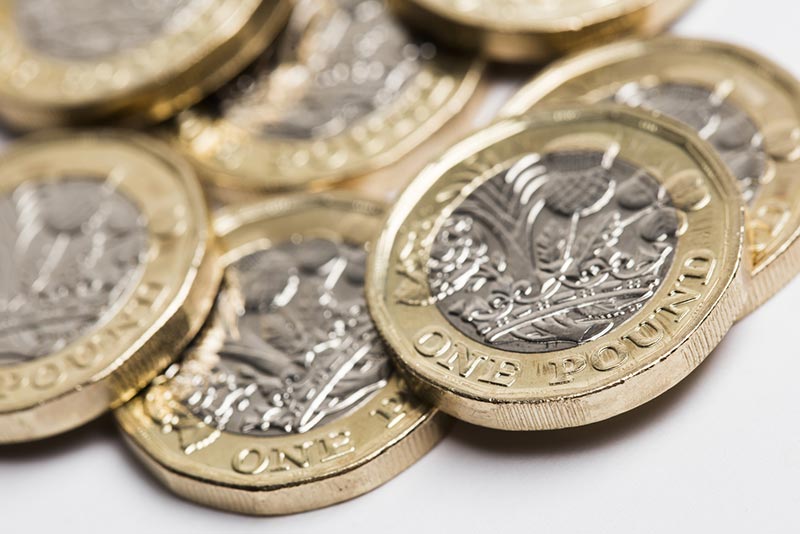26
July 2018
Choosing the Right Type of Credit
No matter how well we financially plan and save, it’s often necessary to borrow money: to make a large purchase such as a car, to deal with emergencies, to simply tide you over until your next payday. In addition, it’s often sensible to borrow small sums of money, such as through a credit card, and pay them back in order to establish a good credit rating so you can qualify for a car loan or mortgage in the future. Taking out a loan without consideration and due diligence can lead to high interest payments, repossession of your assets, and spiralling debt. But if you do your research and select the right type of credit for your circumstances, you can manage the costs and risks of borrowing, and end up ahead.
Do You Really Need to Borrow Money?
Before assessing which type of credit is right for you, you should carefully interrogate whether you need to borrow money at all. Do you absolutely need to spend money right now? Could you delay any purchases until you can afford them or buy things second-hand or find them on a free recycling site? Could you use savings rather than credit to come up with the money? Unless you qualify for a credit card with 0% introductory interest rate and pay it off within that period, using savings will almost always be cheaper in the long run than borrowing money, even when you factor in loss of interest on savings accounts. However, you may decide borrowing money is unavoidable, or highly preferable. In that case, selecting the right type of credit will make borrowing as low-cost and low-risk as possible.
What to Look for When Choosing a Type of Credit
Overdrafts, credit cards, personal loans, payday loans: each will have different interest rates, total costs, terms, penalties for missed payments, and eligibility criteria. Not all will be safe or sensible options. Before we consider specific types of credit and when you should use—or avoid—them let’s examine the key features of each, and go over the kinds of things you should look out for when comparing:
Interest rates and APR
The interest rate is the fee you will pay the lender to borrow a sum of money for a year, as a percentage of the total borrowed. Interest rates can range from 0% during the introductory period of some credit cards to into the thousands for some payday loans. The interest rate doesn’t reflect the total amount you’ll pay, however, when you account for fees, discount points (which lower your interest rate in exchange for money paid upfront), and other charges. Lenders are required to tell you just how much borrowing will cost you per year as a percentage of the principal: this is the APR, or annual percent rate of change. Again, APR can vary from introductory offers of 0% on some credit cards to between 1,000% to 6,000% for payday loans. For context: an APR of 6,000% means you’ll pay £60 on each £1 borrowed for a year. Additionally, it’s important to note whether the lender is offering a fixed interest rate or a variable interest rate. Fixed interest rate means the interest rate will stay constant over the term of the loan while a variable interest rate will change as market interest rates change.
Repayments
How much will you repay in total, over the term of the loan? How much will you be repaying each month? Can you afford that amount? If your circumstances change, say if you lose your job, would you still be able to make the payments? If you have a variable interest loan, would you still be able to afford the repayments if market interest rates rose significantly? Missing payments can mean penalties and mounting interest rates and spiralling debt, so it’s important to carefully consider whether you can afford a loan before taking one out.
Term
The term of the loan is generally the amount of time the loan will last if you only make minimum payments every month. In other words, it’s the maximum time you have to pay the loan back. Terms can range from a few weeks—just until your next payday—to decades on homeowner’s (or home equity) loans.
Secured vs Unsecured Loans
A secured loan is one that uses your possessions, normally your vehicle or property, as security. This means the lender can sell your possessions if you fail to repay the loan. Unsecured loans include homeowners’ loans (loans against the value of your property), logbook loans (loans against a vehicle you own), vehicle financial (loan against the vehicle you’ve purchased with the loan), bridging loans, and some debt consolidation loans. Secured loans should be avoided, if possible, so you don’t end up losing valuable assets and even your home to a lender. An unsecured loan does not use your possessions as security and is almost always preferable (unless you are after a mortgage). Unsecured loans include personal loans, credit union loans, peer to peer (P2P) loans, and money borrowed through credit cards and overdrafts.
Eligibility
Having a bad credit rating will restrict your ability to qualify for certain types of credit, particularly those with low interest rates. Or you may find yourself accepted for a loan but face a higher APR.
Types of Credit and When You Should Use Them
Credit Card
A credit card is a good solution if you want to funds to purchase something and want some flexibility in repaying the money but will be able to do so fairly quickly. Low interest if used correctly: With a credit card, you generally won’t accrue interest if you pay back the amount spent—or borrowed—each month and some credit cards offer 0% introductory interest rates for longer time periods, giving you more time to pay off a large purchase. An introductory period can be a good way of pushing back all payments for something to a later date. However, the interest rates charged by credit cards typically rise to around 17% outside of this introductory period, so credit cards are only a low-cost borrowing option if you can pay back the money quickly. Payment protection: Having a credit card and paying the balance off monthly is a sensible option even if you don’t need to borrow money. Credit cards are accepted almost everywhere and if they’re stolen and used fraudulently, the bank will usually refund you. Credit cards also offer protections on purchases up to a certain amount, meaning the bank may refund you if you never receive a product, a tradesperson doesn’t complete the work, or a company goes out of business before delivering goods or services you paid for. Further, reliably paying off a credit card each month can help you build a good credit history. However, a credit card shouldn’t be used to fund a lifestyle beyond your means: you should only spend what you’re confident you can quickly pay back. Furthermore, you should always set up a direct debit to pay off the credit card each month because even a single missed payment outside of the introductory period can lead to spiralling interest.
Overdraft
Your current account may offer an overdraft facility up to a pre-set limit, either interest-free or with interest and/or fees. Overdrafts can be a stopgap solution if you need to borrow a small amount of money for a short period of time. Borrowing for a long period of time or above your pre-set limit can be very costly and can damage your credit rating.
Personal Loans
A personal loan will allow you to borrow more money from a bank for longer periods of time than a credit card—often from £1,000 to 25,000—but the terms are less flexible: you’ll have to start paying back the money almost immediately and make monthly payments for a set period of time. You generally can’t get a personal loan for less than £1,000 or for less than a year, however, so they’re not good options for smaller amounts or if you only need money until your next payday. Interest rates are generally higher for personal loans than other types of credit, particularly if you’re borrowing smaller sums of money, and the APR advertised may only be ‘representative,’ meaning half the people who apply and are approved for a loan get this rate or better. If you have a bad credit rating, you could be in the half of people who pay a higher interest rate. Also be aware that while most personal loans have fixed interest rates, some offer variable rates. Before taking out a loan with a variable rate, ensure you’d be able to make the monthly repayments if the interest rate changed.
Payday Loan
Payday loans are high-cost, short-term loans designed to tide you over until your next payday. They come with high interest rates—generally between 1,000% and 6,000% APR—and need to be paid back in full by a designated date, usually your next payday. They can be very costly, particularly if you fail to repay them in time, and loans worth just a hundred pounds can easily spiral into the tens of thousands. They should be avoided, if possible, or only used once other alternatives, including personal loans, credit cards, credit union loans and others, have been exhausted and if you’re sure you can pay back the principal plus interest within a month.
Credit Union Loans
A loan from a credit union is a cheaper and less risky alternative to a payday loan. The amount of interest they can charge is capped—to 3% monthly or 42.6% APR in England, Scotland and Wales, and to 1% monthly or 26.8% APR for Northern Ireland—meaning costs will be more manageable.
LogbookLoans
A logbook loan is a loan secured against your vehicle, usually for between £500 and £50,000, depending on the value of your car (although some logbook lenders only lend up to half the value of your vehicle). They’re called logbook loans because when taking them out, you hand over your vehicle’s logbook or registration documents to the lender: they technically own the car until you’ve paid back the loan. APRs on logbook loans generally exceed 400% and you risk losing your car if you can’t pay them back, so it’s a risky and expensive form of credit.
Car Loan
In contrast, a car loan is money taken out to purchase a specific vehicle. You own the car straightaway but have to make monthly payments on the loan or the lender can repossess the vehicle. There are several types of vehicle financing available. Under hire purchase (HP), you put down a deposit on a vehicle and pay the balance of the cost over a period of between 1 to 5 years but sometimes longer. Meanwhile, under personal contract purchase (PCP), sold by the dealership alongside the car, you pay a deposit and then monthly payments for between 2 to 4 years. At the end of that period, you have the option of paying a lump sum, or balloon payment, to buy the car outright or you can exchange it for a new vehicle and new PCP agreement from the dealership.





